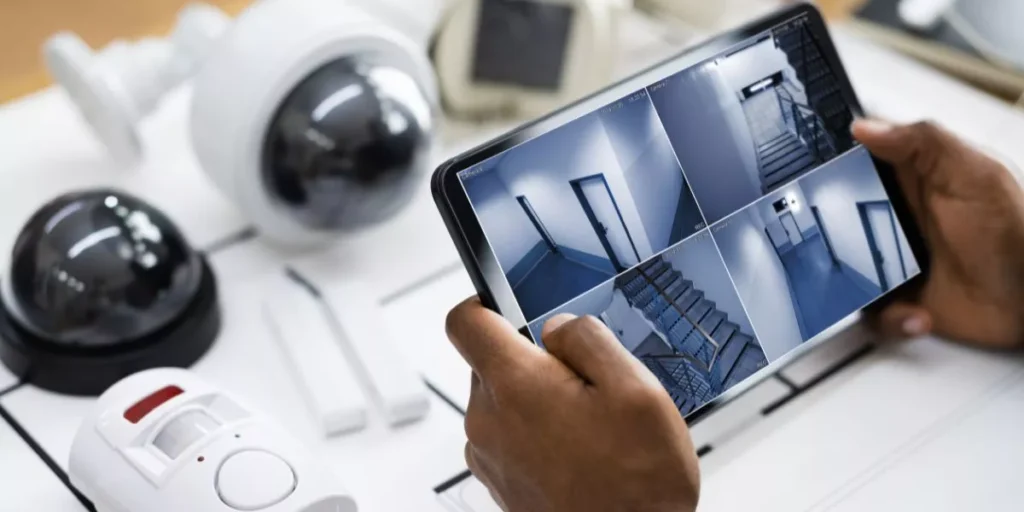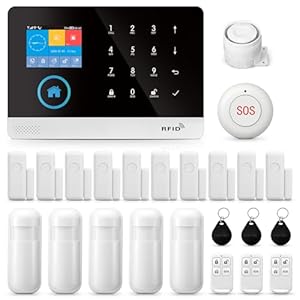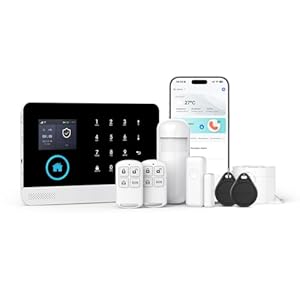
When it comes to setting up a smart home security system on a budget, making wise choices in components can make all the difference. By incorporating key features like motion detection and night vision in your security cameras, you’re already on the right track. But there’s more to consider beyond just the hardware. Think about how you can maximize your system’s effectiveness while keeping costs down. Let’s explore some strategies that go beyond the basics and can truly elevate your home security setup.
Choosing the Right Security Cameras
When selecting security cameras for your budget-friendly smart home system, prioritize features that align with your specific security needs. Consider factors such as resolution, field of view, night vision capabilities, and whether you prefer wired or wireless cameras.
High-resolution cameras provide clearer images, while a wide field of view ensures broader coverage. Night vision is crucial for low-light environments, enhancing your home’s security round the clock. Wireless cameras offer flexibility in installation but may require batteries or charging. On the other hand, wired cameras provide a more stable connection but might necessitate professional installation.
Look for cameras with motion detection and two-way audio for added security and communication capabilities. Motion detection alerts you to any activity, while two-way audio lets you speak and listen through the camera. Additionally, cloud storage options can ensure that your footage is securely saved off-site.
Setting Up Motion Sensors
To enhance your smart home security system, consider incorporating motion sensors for added detection capabilities. Motion sensors detect movement within a specific range, triggering alerts or actions like turning on lights or sending notifications to your smartphone. When installing motion sensors, strategically place them in key areas such as entry points, hallways, or areas with valuable belongings. Make sure to follow the manufacturer’s instructions for optimal placement and adjust the sensitivity levels to avoid false alarms.
When setting up motion sensors, ensure they’re compatible with your existing smart home ecosystem. Many motion sensors work seamlessly with popular smart home platforms like Amazon Alexa or Google Assistant, allowing you to create customized automation routines based on detected motion. Additionally, explore battery-powered or hardwired options based on your preferences and the layout of your home. Regularly test your motion sensors to guarantee they’re functioning correctly and adjust settings as needed to optimize their performance.
Incorporating motion sensors into your smart home security system can significantly enhance your overall safety and peace of mind.
Integrating Smart Doorbells
Considering the benefits of smart doorbells, how can you seamlessly integrate them into your existing smart home security system? Smart doorbells offer features like live video streaming, two-way audio communication, and motion detection, enhancing the security of your home.
To integrate a smart doorbell into your system, first, ensure compatibility with your existing devices or hub. Most smart doorbells work well with popular smart home platforms like Amazon Alexa or Google Assistant.
Next, install the smart doorbell according to the manufacturer’s instructions. Typically, this involves mounting the device near your front door and connecting it to your Wi-Fi network. Once installed, you can customize settings such as motion sensitivity and alerts through the accompanying mobile app.
Integrating your smart doorbell with other smart devices like smart lights or security cameras can further boost your home security. For example, you can set up automation where the lights turn on when motion is detected at the door. This interconnected system provides a comprehensive security solution without breaking the bank.
Implementing Cost-Effective Monitoring
For a budget-friendly approach to monitoring your smart home security system, consider implementing cost-effective strategies that maximize efficiency. One of the most economical options is self-monitoring. By using your smartphone or computer, you can keep an eye on your home without the need for monthly monitoring fees. Set up notifications for any unusual activity, and you’ll be instantly alerted if something isn’t right.
Another cost-effective monitoring solution is to invest in security cameras strategically placed around your property. Look for cameras with motion detection and night vision capabilities to enhance your surveillance without breaking the bank. These cameras can provide valuable footage in case of any incidents, offering both security and peace of mind.
Consider integrating your smart home security system with a neighborhood watch program for added protection. By working together with your community, you can enhance security measures without additional costs. Sharing information and keeping an eye out for each other can significantly improve the safety of your neighborhood.
Trending Products














